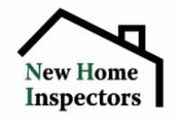
Mold in your home is never good since it can cause serious structural damage, as well as present health risks to your family. Although you might expect to find mold in areas with plenty of moisture, like the kitchen and bathroom, there are other places it can hide. This is why a thorough home inspection is necessary when purchasing a new home. A professional inspector can uncover these mold spots and help you make a better decision.
Where Can You Find Mold in Homes?
1. Chimneys
When chimneys aren’t correctly maintained with annual cleanings and inspections, they can become a home for mold. Moisture and organic matter can collect in the crevices and cracks in bricks, allowing mold to develop. If the flashing or chimney cap leaks, then even more moisture from rain and snow can get inside, leading to more mold.
2. Ceiling Tiles
Checking above the ceiling tiles in a drop ceiling should be part of any home inspection, especially if the ducts for HVAC run through the space above them. HVAC ducts and plumbing pipes create the ideal conditions for mold growth, thanks to the increased moisture from both the radiating heat and cool air surrounding them.
3. Under Wallpaper and Drywall
 Although removing walls and wall coverings is outside the scope of a home inspection, you can still determine if a wall has mildew or mold issues. Look for signs of moisture and damage, such as loose seams, bubbles, staining, or even mildew or mold on the walls. Pay close attention to corners and where the walls meet the ceiling and floor for signs of trouble since this is where water will pool and form mildew if there are any roof looks.
Although removing walls and wall coverings is outside the scope of a home inspection, you can still determine if a wall has mildew or mold issues. Look for signs of moisture and damage, such as loose seams, bubbles, staining, or even mildew or mold on the walls. Pay close attention to corners and where the walls meet the ceiling and floor for signs of trouble since this is where water will pool and form mildew if there are any roof looks.
4. Carpets
Mold in carpets may not be immediately apparent, and it’s not always possible to look under the carpet to check during a home inspection. However, there are some signs, including discoloration, evidence of water damage, and strong, musty odors.
5. Boiler or Water Heater
Your water heater or boiler creates a great deal of condensation while operating. Much of that condensation is collected in a drain, but if it’s dirty or malfunctioning, there’s nowhere for the water to go. This can cause mold growth on the floor or walls near the appliance—and is a sign that you may need to repair or replace it soon.
Before you close on a new home, learn more about the property’s condition with a professional home inspection by New Home Inspectors in Long Island, NY. Their experienced team of inspectors has over 30 years of construction expertise and is both certified and insured. Call (631) 368-1800 today to schedule an inspection for your new home purchase or visit their website for more information on how they can help you.
About the Business
(190 reviews)
Have a question? Ask the experts!
Send your question

